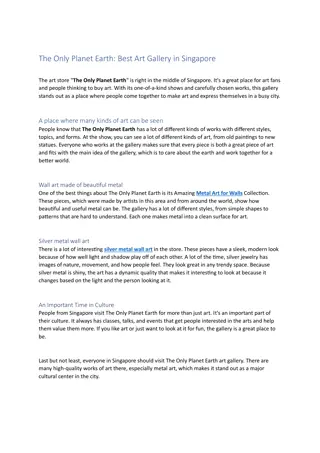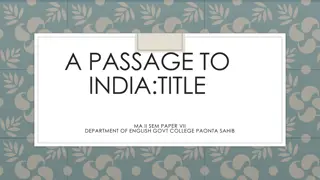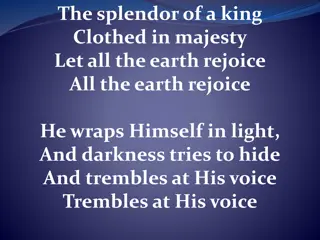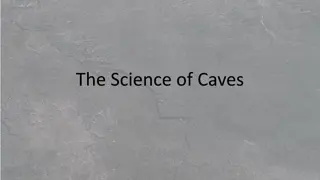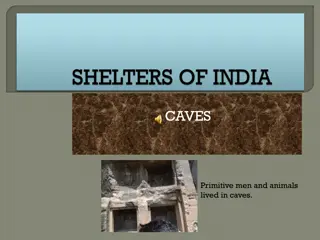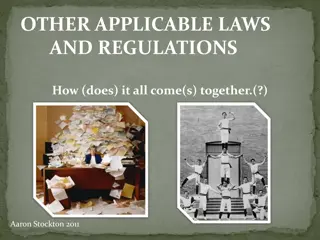Unveiling the Magnificence of Ajanta Caves: A Journey through Time and Art
Delve into the captivating history and exquisite artistry of the Ajanta Caves in Maharashtra, India. Rediscovered in the 19th century, these ancient Buddhist prayer halls and monasteries hold a treasure trove of mural paintings. Explore the challenges faced in preserving these artistic wonders and the ongoing efforts to safeguard their legacy. Discover the intricacies of the Vakataka Empire and the enigmatic creators behind this architectural marvel.
Download Presentation

Please find below an Image/Link to download the presentation.
The content on the website is provided AS IS for your information and personal use only. It may not be sold, licensed, or shared on other websites without obtaining consent from the author.If you encounter any issues during the download, it is possible that the publisher has removed the file from their server.
You are allowed to download the files provided on this website for personal or commercial use, subject to the condition that they are used lawfully. All files are the property of their respective owners.
The content on the website is provided AS IS for your information and personal use only. It may not be sold, licensed, or shared on other websites without obtaining consent from the author.
E N D
Presentation Transcript
Introduction AJANTA CAVE ART In ancient times, monks headed to the Ajanta Caves in Aurangabad, Maharashtra, India for their monsoon retreats while merchants and pilgrims made stopovers to rest there. The caves were abandoned in 5th century AD and were not discovered until some 1,400 years later. Civilisations came and went and eventually, the caves were forgotten. Thick undergrowth flourished and camouflaged the caves. In 1819, a colonial British officer named Captain John Smith, on a tiger-hunting party, stumbled upon the caves. With mankind s rediscovery of the splendour of Ajanta, news spread and attempts were made to put Ajanta in the limelight again as well as unveil its treasures - fine mural paintings to the world.
DISCOVERY OF AJANTA CAVES-1 The Ajanta Caves, 30 spellbinding Buddhist prayer halls and monasteries carved, into a horseshoe-shaped rock face in a mountainous region of India s Maharashtra state, 450km (280 miles) east of Mumbai, were discovered by accident in 1819. After its discovery the popularity of Ajanta caves grew at large among the public. But unfortunately the treasures of Ajanta have been damaged by the visitors A large no of experts who worked and surveyed about the art of Ajanta was a major cause of its damage. Also the treasure hunters, some of whom did more than carve their names on statues: they scraped paintings from walls which crumbled into dust. One of the few known surviving paintings to have left Ajanta intact is in the care of the Boston Museum of Fine Arts today. It had been sold in 1924 for 1,000 at Sotheby s in London
DISCOVERY OF AJANTA CAVES-2 The Government of Bombay commissioned new copies of the Ajanta cave paintings in 1872 from John Griffiths, principal of the Bombay School of Art. Griffiths and his students produced 300 paintings, only for a third to go up in flames at London s Imperial Institute in 1885. In 1909, Lady Herringham, suffragette and art patron, began further copies with help from the Calcutta School of Art, and from the late 1920s the Indian art historian Ghulam Yazdani made a comprehensive photographic survey of the art of Ajanta, published in four volumes between 1930 and 1955.
DISCOVERY OF AJANTA CAVES-3 For the best maintenance of the famous Ajanta Caves and their Art a meticulous restoration raised frequently. The survey shocks the researchers and raised new questions asked many times over the past 200 years, that, how did the artists paint so well, with such precise use of colour, in the dark recesses of these rock-carved prayer halls and monasteries? How many architects, masons, sculptors and painters would have been at work between from circa AD 460-500 when so much of this glorious place, paid for by merchants and courtiers during the reign of the Vakataka dynasty emperor Harisena, was created? And, in those brief years before the fall of the Vakataka empire and its patronage of Buddhist art, could this really have been a place of quiet contemplation when it must have been one vast building site? The Vakataka Empire was a dynasty from the Indian subcontinent that originated from the Deccan in the mid-3rd century CE. And it was declined in 5thC AD.it belongs to the era of MIDDLE KINGDOM OF INDIA.
DISCOVERY OF AJANTA CAVES Unknown for more than 1,000 years except to wild animals, insects, flood waters, prodigious foliage and perhaps the local Bhil people, this magnificent work of art, architecture and contemplation, was abandoned by those who created it as long ago as AD 500. In 1983 it was designated a Unesco World Heritage Site. John Smith, a young British cavalry officer, was on a tiger hunt when he spotted the mouth of a cave high above the Waghora (Tiger) River that could only have been man made. Scrambling up with his party, Smith entered the cave and, branding a flaming grass torch, encountered a great vaulted and colonnaded hall, its walls covered in faded paintings. Beneath a dome, a timeless praying Buddha fronted a mound-like shrine, or stupa.
Ajanta caves are comprised of the following the prayer halls (chaityagrihas) and monasteries (viharas). These have been hewn (cut and carved) from solid rock. between the 1st and 2nd centuries BC There are 25 monasteries, or monks lodgings these were carved in the 5th Century AD.
Subject Matters in the Art of Ajanta-1 India has some of the finest ancient paintings in the world and they are an inspiration for Buddhist paintings across Asia. The Ajanta murals are the earliest surviving paintings in the Indian subcontinent. Found in the dark recesses of caves and interiors of temples, these murals have not been clearly photographed or seen by many Its architecture is of a very high order and it was approached by stair cases. the original stone stairs had long gone. Ajanta caves are crowded by a large numbers of sculptures of Buddah and Bodhisattavas and paintings that took the breath away. Here, Buddhist monks were also painted. We find thousands of lustrous images of the lives the Buddha Siddhartha Gautama who had lived before this 6th Century Indian prince took up teaching and inspired a way of thinking and being practiced by hundreds of millions around the world today.
Subject Matters in the Art of Ajanta-2 Representation of Princes and Princesses Between images of the Buddha, we can find a large no of figurative representations of beautiful princes and princesses. They all look very sensuous. Each and every one of these representations are full of glamorous princes and princesses Other subject matters in ajanta cave apintings The Ajanta paintings we also see images of animals, palaces, silks, jewellery, Scenes of Divine beauty Scenes of lovemaking is another very astonishing and shocking submatter to e found in these caves. Artista of Ajanta Art showed the life in all its mortal richness. Some of the images shocked the viewrs and they are still unable to comprehend that what these Indian artists saw was a joyous vision of natural fecundity and divine beauty.
Subject Matters in the Art of Ajanta- 3 Influences These paintings showed remarkable influence and affinities to classical Greek art. This was not coincidence, but evidence of a Greco-Indian culture that had spread from the 4th Century BC expeditions of Alexander the Great. It stretched through Hellenistic kingdoms and trade routes from the Mediterranean to Persia, Afghanistan and India with Ajanta along the way to distant China and Japan.
Characteristics of Ajanta Cave Paintings-1 Ajnata cave paintings are best known for the un measurable beauty of Buddha s Image. Depiction of Buddhist themes give us a treat of eyes and is the main reason of the fame Ajanta caves. illuminating statues of the praying Buddha, the spellbinding architecture and the compelling beauty of the wall paintings lift Ajanta above such worldly concerns. The Ajanta cave Art may be a tourist magnet in India , yet thanks to generations of conservationists, Ajanta remains a gateway to Nirvana.
Characteristics of Ajanta Cave Paintings-2 Ajanta cave paintings have revealed the use of intense colours in the paintings The portraits painted in Ajanta Cave Art are of sheer beauty. Many portraits depicts the mastery of its artist these portraits were painted along with the subtlety of their artists use of perspective, shading and other three- dimensional techniques including the use of bright stones, notably lapis lazuli from Afghanistan. the precious chaityagrihas and viharas of Ajanta caves declare them as Buddhist Caves
Characteristics of Ajanta Cave Paintings-3 during the reign of the Vakataka dynasty emperor Harisena, these places was created. And the merchants and courtiers of the time had paid money for this glorious place. During the period of Vakataka empire, the king was the patronage of Buddhist art. During his reign till the fall of his kingdom the Ajanta Caves have been a place of quiet contemplation.
Characteristics of Ajanta Cave Paintings-2 Their meticulous restoration have been done for many times over the past 200 years, for the best maintenances of the Ajanta Art. The artists painted so well, with such precise use of colour, in the dark recesses of these rock-carved prayer halls and monasteries. All art work inside Ajanta Caves are lying inside the darkest abode of these caves. When sunlight strikes the paintings and sculptures, it illuminates them. Many architects, masons, sculptors and painters would have been at work between from circa AD 460-500
SALIENT FEATURES OF AJNATA WALL PAINTINGS Walls of the Ajanta caves are decorated with Ajanta paintings, depicting the pomp and splendour of the royal courts, the romance of love, singing and dancing. Some of them depict the world of nature vegetation and flowers, animals and birds. Many themes depicted are from the Buddha's life and Jataka stories. The scenes are full of vitality. Figures are drawn with admirable skill. The intense human appeal gives the message of unity of life depicted through the panorama of all forms of life. The paintings give a fuller picture of real life. The medium used to draw is line. What was achieved in the West with could was achieved in India with line. This style in ancient time spread to central Asia and is evident in wall paintings and in paintings on wooden panels. The tradition of painting continued for sometime in other parts of India like Badami, Kanchi and Ellora. Later, it spread to Sri Lanka. Gradually, the art of wall painting faded, though the art of book illumination continued, particularly in Jain texts.
SALIENT FEATURES OF AJNATA WALL PAINTINGS The main colours used were red ochre, yellow ochre, brown ochre, lamp black, white and lapis lazuli Lapis lazuli was imported from Northern India, central Asia and Persia. The green was made by mixing this lapis lazuli with Indian yellow ochre. In the pictorial cycles, all the characters are bright and multi-coloured but are never repeated, a fundamental concept in Indian art. Ceilings, walls and pilasters are all covered with overlapping figures, brought to life by the artists with strong and contrasting colours. The painting techniques at Ajanta are similar to European fresco technique. The primary difference is that the layer of plaster was dry when it was painted. First, a rough plaster of clay, cow dung, and rice husks were pressed on to the rough cave walls. This was then coated with lime juice in order to create a smooth working surface. There is gentleness, kindness, generosity, love and warmth in the painted figures which takes away the viewers to another world . The faces and gestures can only come from the beauty and gentleness within.
The Ajanta Caves were abandoned in the 5th Century AD and werent discovered by the outside world until some 1,400 years later (Dinodia Photos / Alamy)
Alavokitesvara (Examples) This painting can be found to the left on the main shrine. It depicts one of the most beloved bodhisattvas, Avalokitesvara. The term bodhisattva refers to a person that has been awakened by the Buddhist spirit. According to Mahayana doctrine, Alavokitesvara postponed his ascension into Buddhahood until he assisted every being in achieving Nirvana. Avalokitesvara takes the largest numbers of forms across Asia. Originally, a masculine form, Avalokitesvara is also known as the feminine Guanyin in China, and Kuan Yin in Japan. In the painting, his tan body, darkened only by the locks of curly hair, is delicate and elegant. He is adorned with pearls, amythyst, and other attributes of traditional Indian jewelry. On his head sits a magnificent crown, which at some point was most likely colored in extreme detail, but over time has faded. His eyes are lowered in a meditative state. His calm, spiritual face sets the tone and mood of the room. In his right hand, he holds a lotus blossom, which may represent his spiritual awakening. Students will find the image and copy here it is taken as assignments and must share with their teacher
A wall painting of Bodhisattva Padmapani in Cave 1. (Examples) This is one of the most graceful paintings in Ajanta. "Padmapani means Bearer of the Lotus and he brings before us the Peace of the Spirit, There were thousands of painted figures all over the walls of the caves. Each one exudes the spirit of compassion. Most of the paintings were inspired by the Jataka tales about the life of Buddha. There is a presence of so many other gracious figures filled with a new sense of joy and optimism. Students will find the image and copy here it is taken as assignments and must share with their teacher
Assignment write down brief notes on the following examples share the image of the painting A prince bringing offerings to Vajrapani, the Bearer of Thunderbolt, in Cave 1.
AN AERIAL VIEW OF AJANTA CAVES Ajanta caves are the house of representations of Bodhisattva, a figure representing one of the past lives of the Buddha before he achieved Nirvana, or union with the divine spirit. It is also a gallery of the oldest and some of the finest of all Buddhist art It has gained fame and become a compelling tourist attraction.
Ajanta cave painting: the ceiling The caves interiors are lined with extremely colourful paintings, which some have tried to chip way in order to move elsewhere (Ivan Vdovin / Alamy)
Research references https://www.slideshare.net/parasahuja167/ajanta- caves-76117349 https://brainly.in/question/3097898#readmore https://www.slideshare.net/swami99/ajanta-paintings- appreciation-of-mahajanaka-jataka-composition https://www.slideshare.net/robymariavincent/ajanta- ellora-caves https://www.slideshare.net/rizzu871/ajanta-ellora- caves-42448668 https://www.esamskriti.com/e/Culture/Indian- Culture/Benoy-K.-Behl-brings-ancient-wonders-of-the- Ajanta-Caves-to-Light-1.aspx
To watch https://www.youtube.com/watch?v=a1SdRCD HESM https://www.youtube.com/watch?v=InmFDhV yszw
Books Paintings of Ajanta caves (2nd century BC to 6thcentury AD) Appreciation of Mahajanak Jataka composition By S.Sawaminathan Published 2011 Published in: Education Spirited
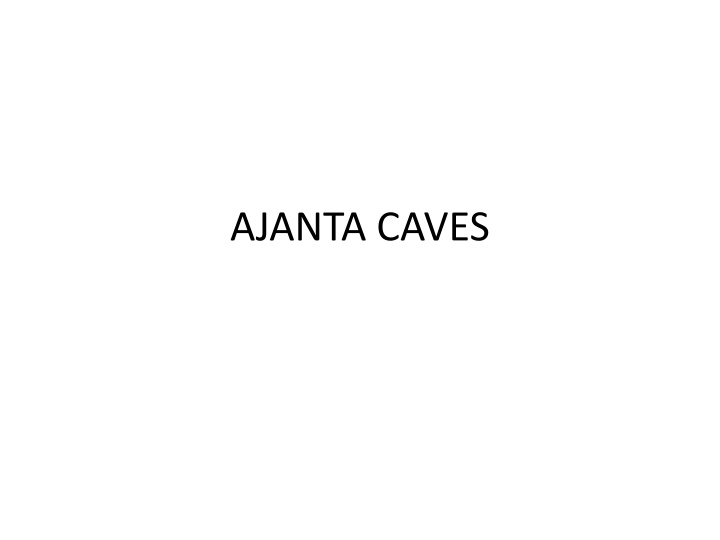

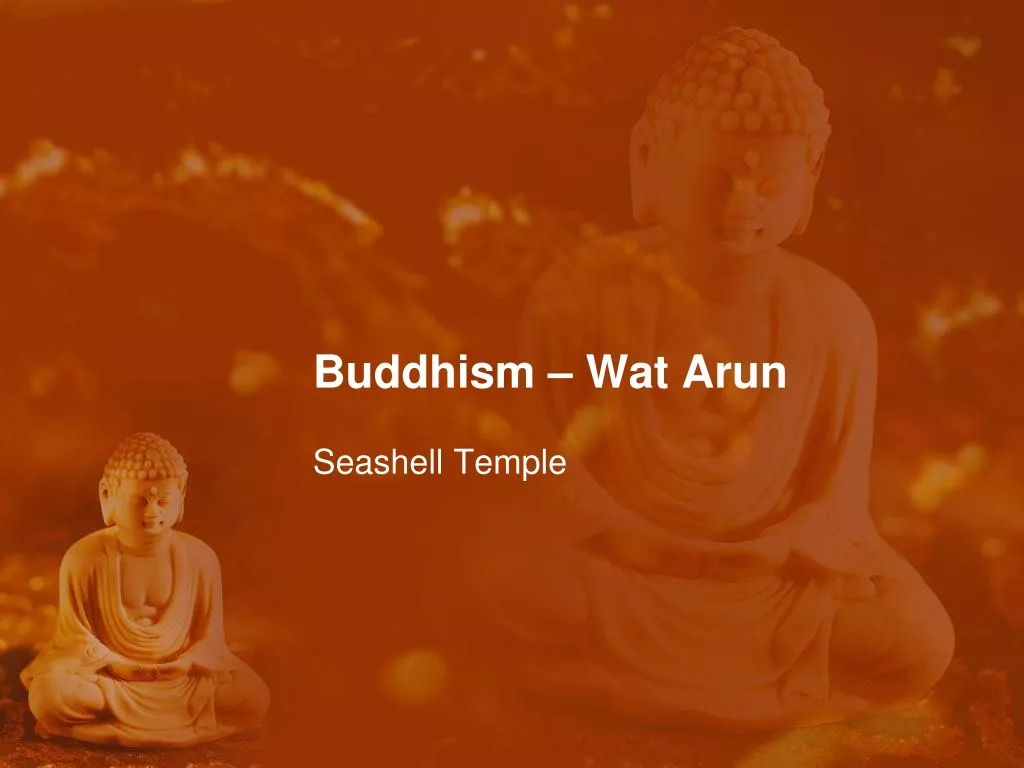
![[PDF⚡READ❤ONLINE] In Ruins: A Journey Through History, Art, and Literature](/thumb/20543/pdf-read-online-in-ruins-a-journey-through-history-art-and-literature.jpg)






